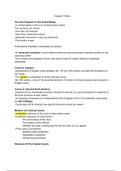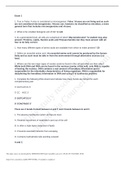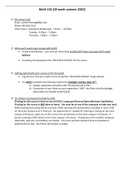College aantekeningen
Virology
- Vak
- Instelling
This is a summary of notes obtained in the lecture theatre and further online research. It includes statistics of several famous outbreaks of viruses in humans and the control measures applied to control the spread of the diseases. It includes coronaviruses, rotaviruses, human immunodeficiency viru...
[Meer zien]








